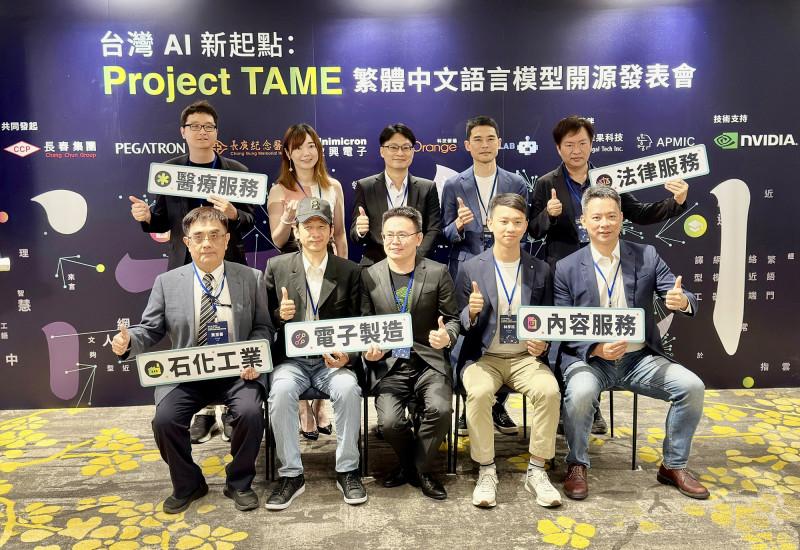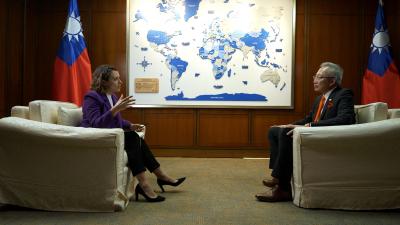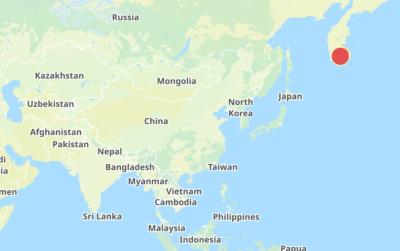An open-source traditional Chinese large language model (LLM) localized for Taiwan was released today, achieving higher scores in the Taiwanese bar exam than GPT-4o.
The project, called Taiwan Mixture of Experts (TAME), was initiated by Chang Chun Group, Pegatron, Unimicron, Chang Gung Memorial Hospital, TechOrange and National Taiwan University.
Using Nvidia’s Taipei-1 supercomputer in Kaohsiung, it was trained on nearly 500 billion tokens of data provided by the partners in their specialized fields.

Photo: Fang Wei-chieh, Taipei Times
On its first attempt taking last year’s bar exam, Project TAME did better than 89 percent of test takers, LegalSign.ai CEO Steven Chen (陳啟桐) told a news conference in Taipei.
After only a few months, it has already received outstanding marks when taking the exams for university, legal professionals, traditional Chinese medicine practitioners, tour guides and drivers, Project TAME said.
Out of 39 evaluations and nearly 3,000 questions, Project TAME outperformed all other available models, with an accuracy rate 6.8 percent higher than the second-place Claude-Opus and 9.3 percent higher than GPT-4o.
The model is available to use for free online at https://twllm.com and would be run open source, organizers said.
An interactive chatbot version for the public was created by AMPIC.
It is also available for download by enterprises and developers on Github.
The new LLM is the result of 350,000 GPU hours and 1,285 working hours by 31 engineers, Project TAME leader and Pegatron associate vice president of AI development Andrew Hsiao (蕭安助) said.
Its two specialties are localization for Taiwan and application for industry, he said.
It was only just released today, but enterprises would be able to verify and fine-tune the model as time goes on to verify whether it is suitable for use in different fields, he added.

“China is preparing to invade Taiwan,” Deputy Minister of Foreign Affairs Francois Wu (吳志中) said in an exclusive interview with British media channel Sky News for a special report titled, “Is Taiwan ready for a Chinese invasion?” the Ministry of Foreign Affairs said today in a statement. The 25-minute-long special report by Helen Ann-Smith released yesterday saw Sky News travel to Penghu, Taoyuan and Taipei to discuss the possibility of a Chinese invasion and how Taiwan is preparing for an attack. The film observed emergency response drills, interviewed baseball fans at the Taipei Dome on their views of US President

The Central Weather Administration (CWA) today issued a "tsunami watch" alert after a magnitude 8.7 earthquake struck off the Kamchatka Peninsula in northeastern Russia earlier in the morning. The quake struck off the east coast of the Kamchatka Peninsula at 7:25am (Taiwan time) at a depth of about 19km, the CWA said, citing figures from the Pacific Tsunami Warning Center. The CWA's Seismological Center said preliminary assessments indicate that a tsunami could reach Taiwan's coastal areas by 1:18pm today. The CWA urged residents along the coast to stay alert and take necessary precautions as waves as high as 1m could hit the southeastern

The National Museum of Taiwan Literature is next month to hold an exhibition in Osaka, Japan, showcasing the rich and unique history of Taiwanese folklore and literature. The exhibition, which is to run from Aug. 10 to Aug. 20 at the city’s Central Public Hall, is part of the “We Taiwan” at Expo 2025 series, highlighting Taiwan’s cultural ties with the international community, National Museum of Taiwan Literature director Chen Ying-fang (陳瑩芳) said. Folklore and literature, among Taiwan’s richest cultural heritages, naturally deserve a central place in the global dialogue, Chen said. Taiwan’s folklore would be immediately apparent at the entrance of the

ECONOMIC BENEFITS: The imports from Belize would replace those from Honduras, whose shrimp exports have dropped 67 percent since cutting ties in 2023 Maintaining ties with Taiwan has economic benefits, Ministry of Foreign Affairs officials said yesterday, citing the approval of frozen whiteleg shrimp imports from Belize by the Food and Drug Administration (FDA) as an example. The FDA on Wednesday approved the tariff-free imports from Belize after the whiteleg shrimp passed the Systematic Inspection of Imported Food, which would continue to boost mutual trade, the ministry said. Taiwan’s annual consumption of whiteleg shrimps stands at 30,000 tonnes, far exceeding domestic production, the ministry said. Taiwan used to fill the gap by importing shrimps from Honduras, but purchases slumped after Tegucigalpa severed diplomatic ties with Taiwan